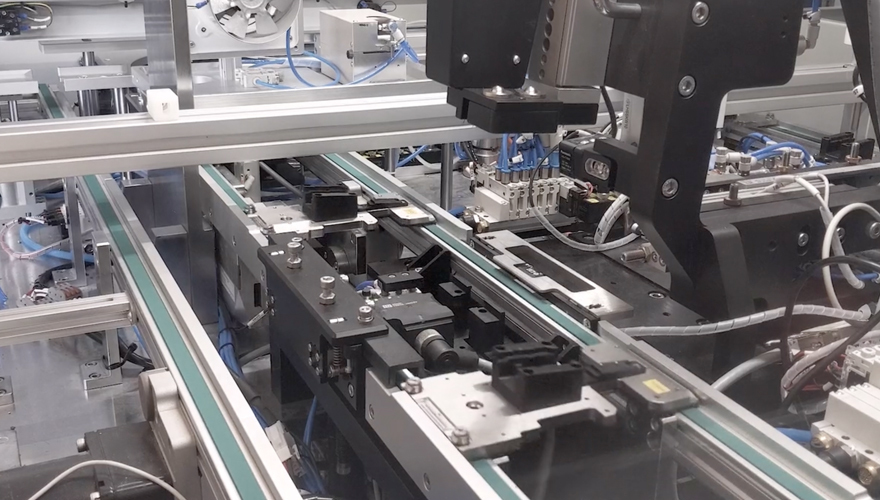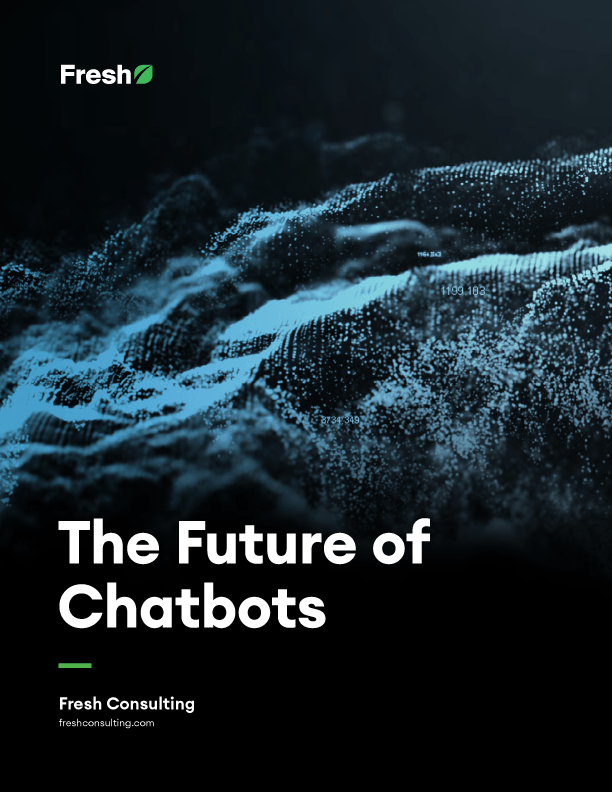Article
10 Ways AI Will Benefit Your Business

Businesses in the 21st century are using artificial intelligence (AI) in ways that would’ve been considered science fiction a few decades ago.
AI-powered tools are being applied by companies across the globe in every aspect of business—from simple processes like scheduling meetings, to market movers like self-driving cars. You probably interact with some form of AI already. And as AI technology grows, it’s becoming a vital tool for companies that want to maintain their competitive edge. Forbes predicted that by around the year 2020, AI will touch everything.
Here are 10 ways AI can already benefit your business:
1. Customer Service
More than 60% of consumers now expect businesses to anticipate their needs and 63% say customer service overall isn’t as easy as they want it to be. For businesses, these are alarming statistics. But by correctly using AI’s advanced technological capabilities, meeting these high customer expectations is very possible.
Salesforce’s 2019 State of Service Report discovered that over half of service companies—even those with already outstanding customer satisfaction—are looking for new ways to incorporate AI into their customer service operations. This increase in adoption will clear up more use cases for AI. In addition to gathering information about a customer for human agents, AI will help save time by allowing companies to outsourcing other routine, time-consuming customer service tasks.
2. Better E-Commerce Experiences
Brand loyalty is fizzling out as people prioritize convenience and speed when they shop. When used correctly, AI can support your marketing by improving your customers’ experience when buying your product. Research from Wunderman Thompson Commerce showed that out of 6,000 consumers, 88% said speed of delivery is more important to them than the brand’s name.
People in 2019 demand more innovative customer experiences, which has most likely been fueled by services like Amazon Prime. Retailers that fail to provide these elevated digital experiences will fall behind.
Of those surveyed, 69% said they want effortless experiences from E-Commerce sellers, preferring to shop with only the most innovative stores.
3. Chat-Based Customer Communication
Chatbots are automated computer programs that talk to users through a conversational interface on your website. AI helps bots understand complex questions, personalize answers, and improve conversations over time. Most AI follow algorithms set by developers through bot-building platforms, usually by creating a list of if-then statements followed by canned responses.
Say you want a new coffee maker from your local department store. You could go to their website, sift through 15 or 20 product pages, read all the reviews, fill out the payment forms, and so on. But if you were talking to a bot, you’d simply type in what you wanted and it would guide you through the options and place the order. Behind the scenes, the chatbot is guiding you through a series of questions to gather the necessary information to understand your intent and then deliver the right information to fulfill your request.
Products like Facebook Messenger allow businesses to apply simple AI for anyone to use. With these tools, customers can figure out solutions and even buy items directly from the bot.
4. Clear Up Time by Minimizing Mundane Tasks
Knowledge workers spend a lot of time on tasks that provide little value. Let’s say you need to schedule a project status meeting before proceeding with the project, but you need seven other people to join. This usually involves spending too much time playing email tag or finding time on everyone’s calendar. Does that sound like a worthwhile use of time for your team?
Software tools like X.ai eliminate this scheduling ping pong by giving employees AI-backed personal assistants that handle administrative tasks like scheduling meetings. This eliminates one more nagging line from your already busy team’s to-do list.
AI service desks help employee support teams balance their existing commitments with other responsibilities by removing interruptions from repetitive requests.
5. Improved Conversion Rates
Every business wants to boost their conversion rates and increase their bottom line. AI can help you continue generating revenue through a new tool called computer vision (CV).
Computer vision is transforming the way we shop by suggesting related products based on visual similarity. This makes the experience easier for shoppers since they can find products using pictures in addition to tagged text.
Amazon, for instance, uses predictive algorithms to forecast buyer motivation of the individual product. It then makes personalized recommendations for which products they might like based on this behavioral data. This very complex but helpful tool covers 35% of Amazon’s sales and highlights the importance of having an AI-powered data strategy.
6. Competitive Intelligence
Following leading companies in your industry is not enough. To stay ahead of your competitors, you need to improve every aspect of your customers’ experience. To do this, you need to study your marketplace closely and measure how well your competitors are performing.
This is where AI-powered competitive intelligence comes in. Using software to keep tabs on your competitors’ performance identifies their strengths and weaknesses and reveals gaps your business can fill.
One example of AI providing a competitive advantage is Airfare Insights. Software helps major airlines monitor relevant fare changes in the marketplace and then adjust their pricing. They’re able to stay on the pulse of a quickly-changing industry to maximize their profit margins.
7. Automated Ad Placement and Audience Customization
Today’s brands are using AI to examine social and sales data to more clearly identify and segment audiences, optimize ad spend, and test variations. Online retailers, for example, can find out customers’ preferred payment options using automated data mining. Another case could be automating the placement of ads in the right spots on the right platforms for the people who are most likely to buy your product or service.
Household name Harley Davidson uses AI to test thousands of messages and creative variations to predict the most desirable outcome. By putting the right AI to work, one of their New York City dealerships increased sales leads by 2,930%.
This type of AI application has an immense impact on your business’s competitive advantage and your understanding of who you’re advertising and selling to.
8. Automating Cybersecurity Defense
As businesses apply AI techniques to every piece of data they collect—from recruiting software to sales data to customers’ online behavior—security data is taking center stage. Like any other machine learning (ML) model, the more data you give your AI, the more accurate it will be at spotting trends and making the right predictions to give your business a leg up.
Successfully using AI in your business requires a clear understanding of which problems you want to solve. The goal of AI in cybersecurity is to create an automated process that can predict and detect malicious cyberattacks and then automatically respond in the best way possible.
For example, Cisco’s Umbrella security platform applies ML to its vast database of consumer activity to detect distributed denial-of-service (DDoS) attacks.
9. Intelligent Screening for Healthcare Providers
AI is poised to gradually transform healthcare by equipping doctors with new technologies to better serve patients. Healthcare businesses are among the most technologically advanced and require vast amounts of data to make accurate decisions. AI designed to automatically sift through all this data to search for signs of health problems like lung cancer or diabetes can provide more accurate and quicker results. And through machine learning, the more data an AI scans, the more efficient it becomes.
An example of AI in healthcare is Google’s collaboration with health providers to explore computer-aided diagnostic screening for diabetic retinopathy—the fastest-growing cause of preventative blindness. The technology is still in its early days, but the collaboration’s ultimate hope is to help clinics across the world expand their screening capabilities for at-risk individuals.
10. Financial Process Automation
Leaders in the financial industry are looking toward AI to help cut costs and improve overall productivity. The use of intelligent character recognition has made it possible to automate a variety of repetitive, low-level tasks that used to take human workers thousands of hours to complete. AI-powered software can also review documents, verify the data, and extract information from financial contracts and agreements.
JP Morgan Chase has been harnessing robotic process automation (RPA) for years now to perform these kinds of tasks and calls it one of the five emerging technologies to improve their financial management process.
The Future of AI in Business
So how will we use AI in the future? Most experts predict that commonplace tasks will become even easier for computers to take care of. AI will take some of the tedious work off our hands and give us more information at our fingertips, allowing us to expand into new territory. As new applications emerge, we’ll see new startups, consumer uses of robots, automation of certain tasks within jobs, and the creation of completely new jobs.








